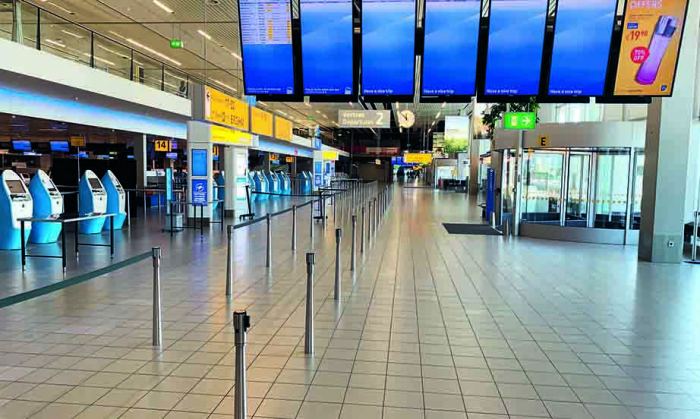With a large number of vessels and deploying a range of disciplines, Boskalis recently completed the installation of the world’s largest floating wind farm. The Kincardine wind farm is located offshore Scotland about fifteen kilometers southeast of Aberdeen. “Floating wind has a great future,” says Boskalis Marine Services director Steve van Hulle. “We have gained very valuable knowledge that we will benefit from in the future.”
The offshore locations where turbines can still be mounted on jackets or monopiles are gradually becoming scarce,” Van Hulle explains. “So in the future, more and more wind farms will be located in water depths of 60 to 800 meters, making floating structures like this indispensable.” In Port La Nouvelle in the South of France, Boskalis is also working on a project that focuses in part on the installation of floating turbines. The water is too deep for traditional wind-turbine foundations in this part of the Mediterranean.
Demonstrator
The Kincardine wind farm was commissioned by Cobra Wind International from Spain. Five floating wind turbines have been installed, each with a capacity of over 9.5 megawatts. The turbines are approximately 170 meters tall at the top of the rotor blades, dwarfing the London Eye by almost forty meters. It was decided to build the farm after the positive results from the client’s pilot project at the same location. That trial consisted of the installation of a first, slightly smaller, floating wind turbine.
Floaters
The turbines are positioned on triangular, floating foundations called floaters that are about thirty meters tall. About a third of a floater sticks out above the surface. They consist of three floating steel columns with a diameter of twelve meters held together by three connecting elements about fifty meters long. Each one has a ballast system to maintain height and stability. The turbine is placed in one of the corners of the triangle. Heavy-duty anchoring structures with chains and concrete blocks keep the floaters in place so that the towering wind turbines can run safely and stably.
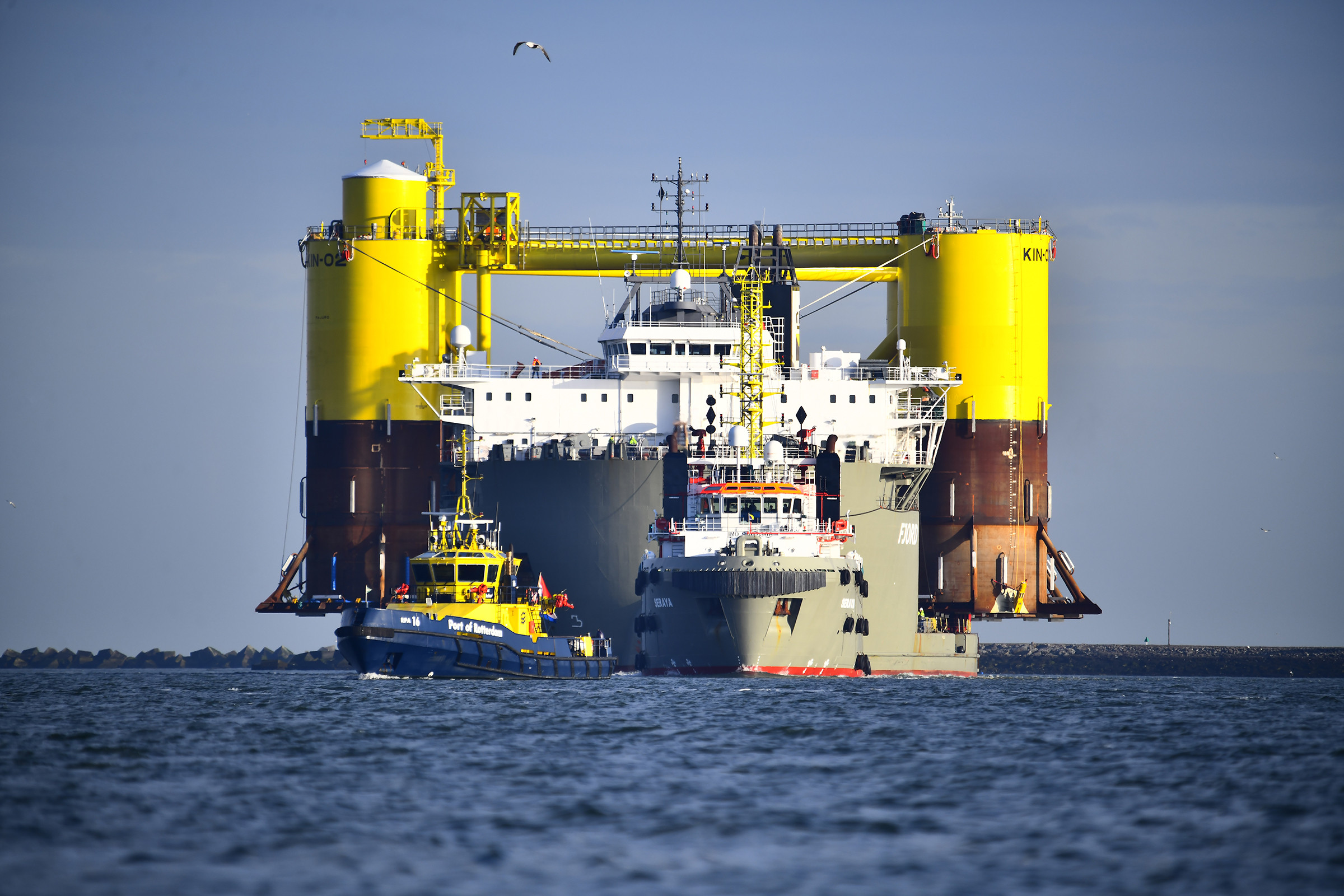
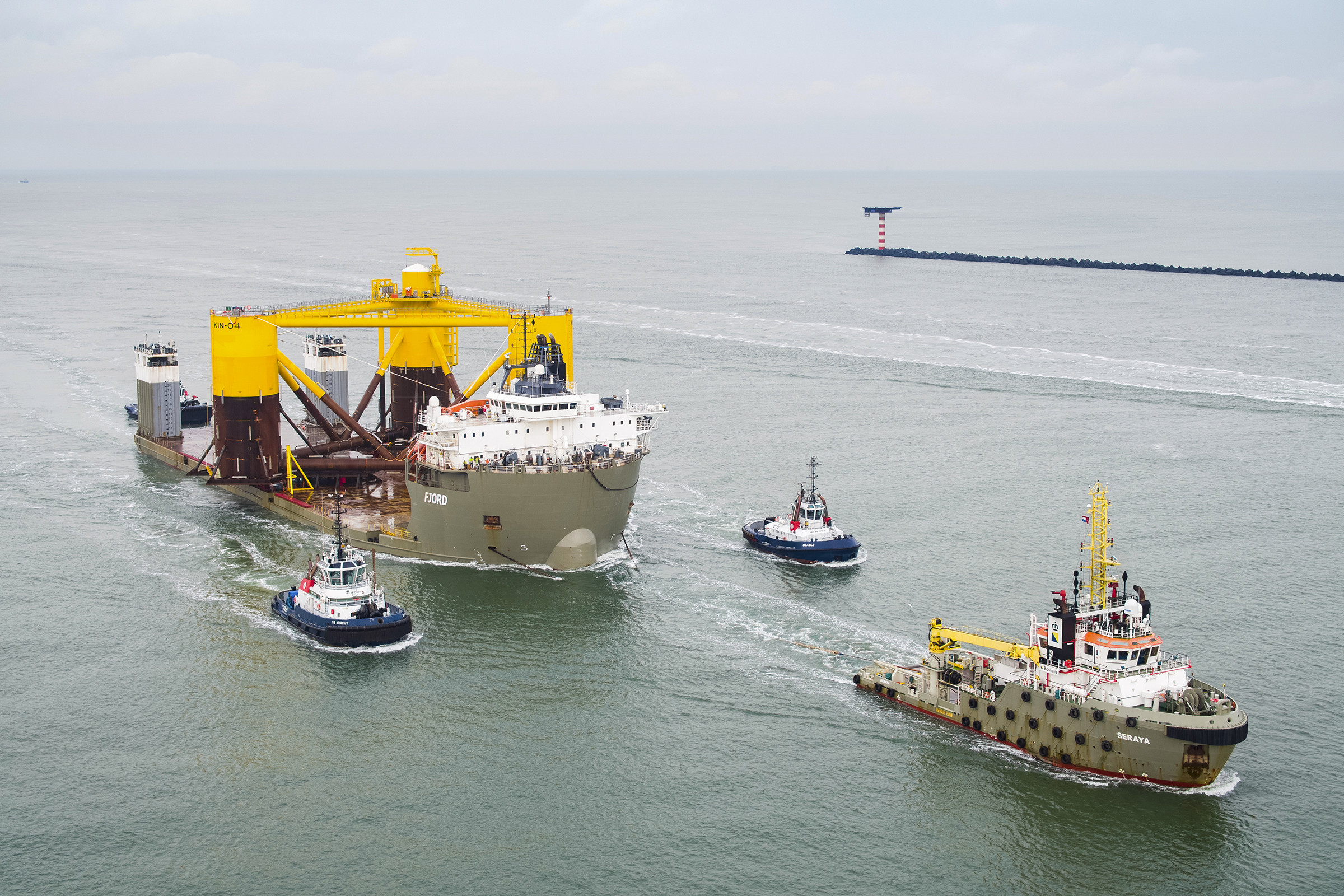
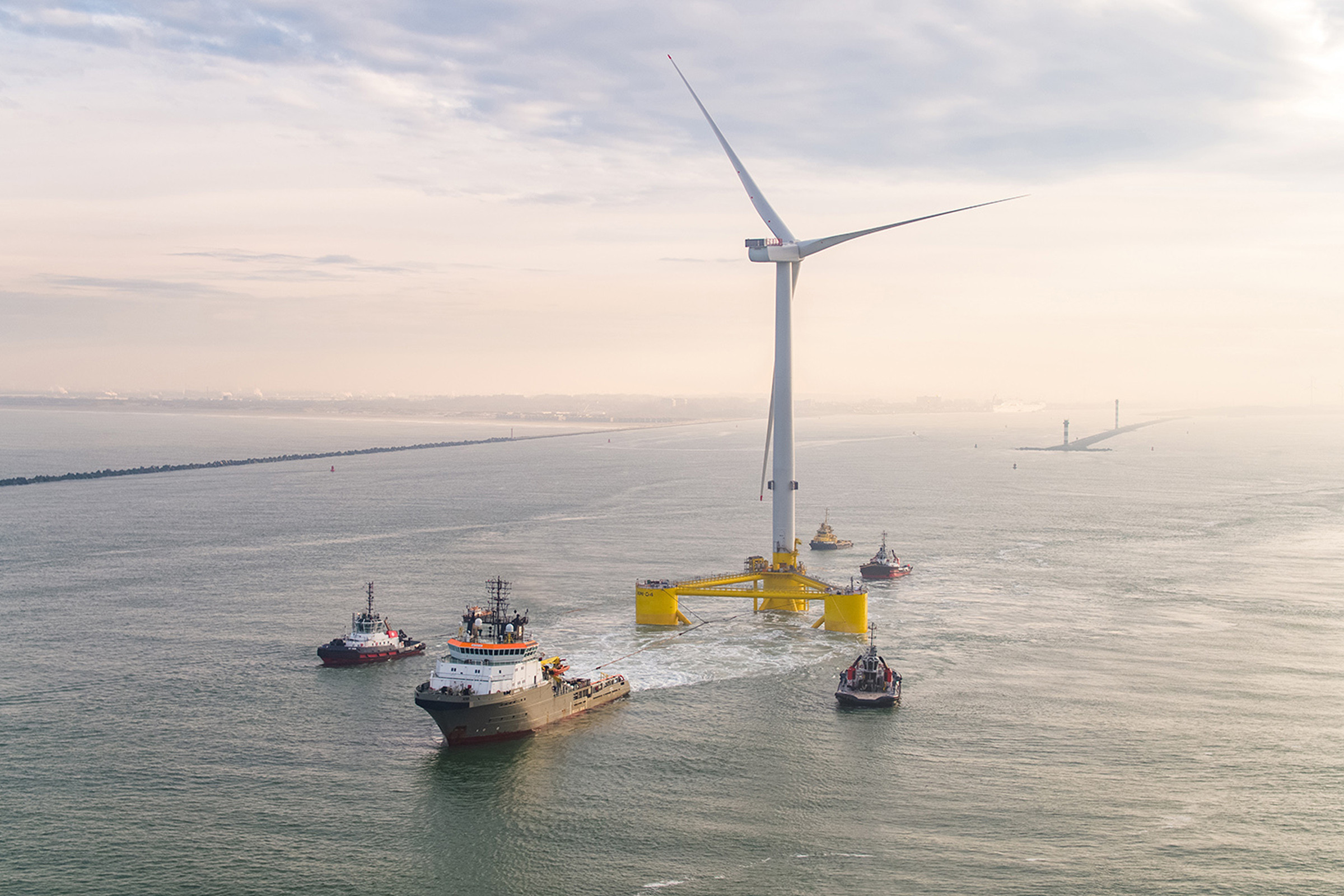
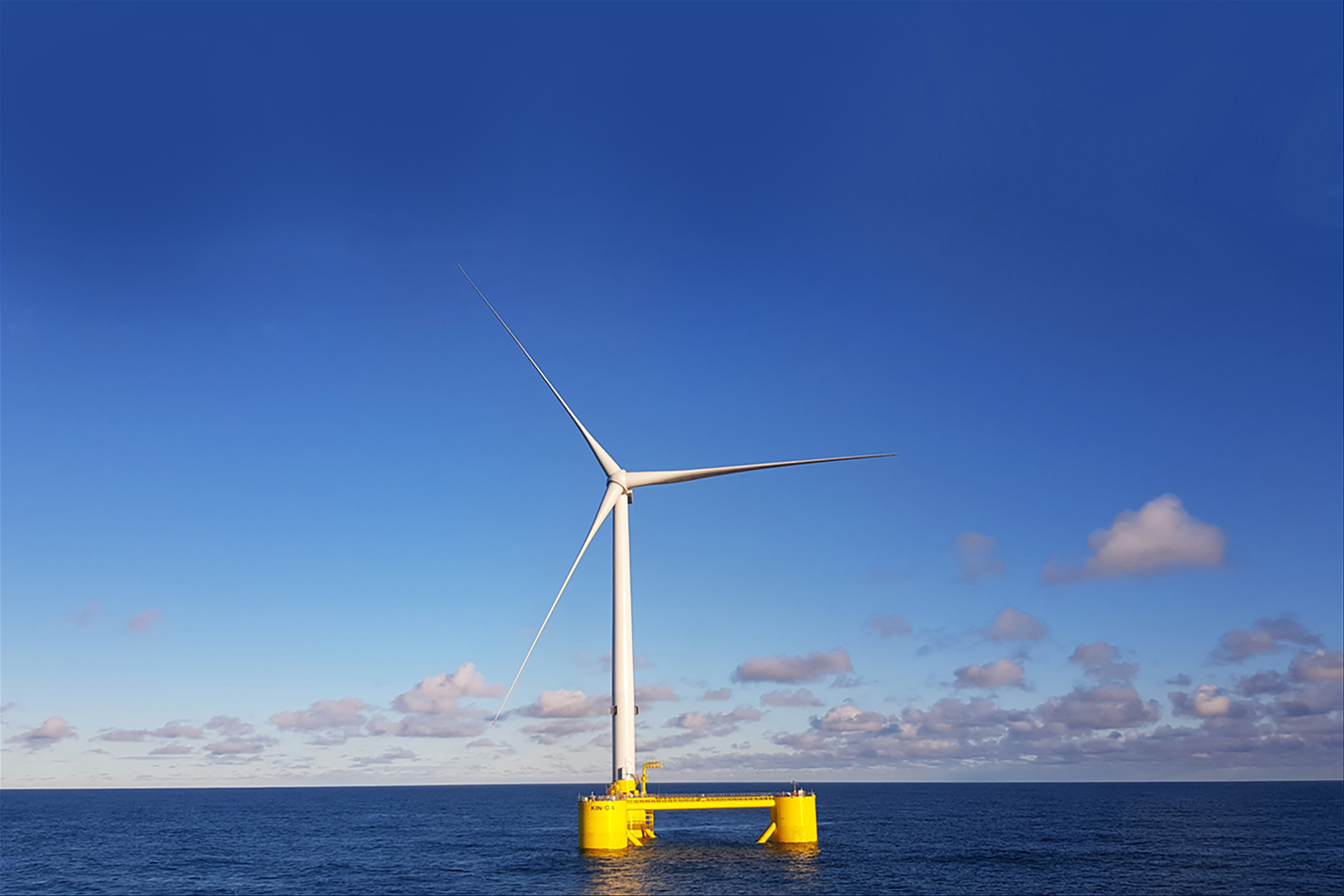
Mooring
The mooring is a crucial part of the work. The three-point mooring system consists of large Stevshark Rex anchors and enormous chains that were installed on the seabed. A heavy anchor handling tug positioned the mooring spread on the seabed after which a Remotely Operated Vehicle (ROV) was used to check if everything had been executed correctly. Lighter chains were connected to the mooring spread and finally an HMPE cable to the three corners of the floater. The cables hang in the water in a curved pattern. “The special chain structure bridges the height difference between low and high tide and the structure is locked into place in all weather conditions,” Van Hulle explains. To fix the mooring spread to the seabed, the anchor chains were weighed down every few meters with concrete blocks weighing more than eight tons. “We made the preparations for this enormous job on the quay of the Scottish port of Invergordon, started installing the first mooring spreads in the fall of 2020 and completed the installation of the last mooring spread in April 2021.”
Transport Spain-Netherlands
Dry marine transport also played a major role in the project. The five floaters were constructed in Ferrol in Spain, where they were loaded onto Boskalis’ semi-submersible barge Fjord from the quay by SPMTs (Self-Propelled Modular Transporters). Van Hulle: “To give an idea of the size of the operation: the Fjord is 45 meters wide and the floater sticks out on both sides. After seafastening the floater, our anchor handling tug Seraya towed the Fjord to Rotterdam in about six days.” In addition to the five voyages from Spain to the Netherlands, one of the floaters was first transported from Gibraltar to Ferrol. After arrival in Rotterdam the Fjord was partially submerged after which the floaters actually did what their name implies - float - for the first time. That was followed by extensive testing before they were transported a short distance by port tugs to the Sif company’s quay where the wind turbines were built. The floaters were temporarily held in place there with a mooring system so that the turbines could be installed.
Lift bags
When the turbine was positioned on the floater, the total weight was such that the water alongside the quay was actually too shallow. The weight was distributed using the internal ballast system and the draught was reduced by using twenty lift bags. These are like large balloons that are attached to the bottom of the floater before being filled with air. As a result the immense structure was raised high enough.
Transport Netherlands-Scotland
The assembly and operational delivery of a floating turbine took about a month. The Boskalis heavy anchor handler Manta was deployed to tow the huge structures to Scotland. The transport of the colossal units to Scotland was a spectacular sight. “To eliminate any risk the Manta sailed at a speed of three knots per hour, so each transport to Scotland took about six days,” says Van Hulle.
Hook-up
In addition to a number of Boskalis our vessels ROVs were deployed for the hook-up activities as well, this time from the anchor handler Nicobar. The ROV arms picked up the anchor cables from the seabed and attached them to a winch line on the floater, after which the HMPE cable was pulled up from the mooring spread and attached to the floater. “It’s not possible to work with ROVs in high waves and fast currents, and our colleagues have to be able to move safely from the ship to the floater during the operation, so we needed relatively calm weather to complete the installation work, which we did successfully in July 2021.”
“I’m extremely proud of the Boskalis team that executed this innovative project to the full satisfaction of our client. With our team of highly skilled professionals and specialized fleet we are ready to play our part in this exciting new market,” concludes Van Hulle.
